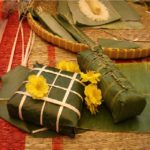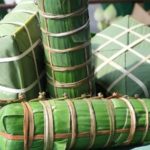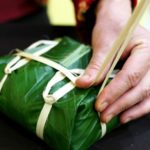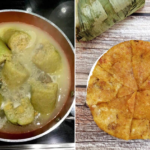Should You Cut Bánh Chưng with a String or a Knife?
When it comes to cutting bánh chưng, a traditional Vietnamese rice cake, there are two common approaches: using the string to cut it into neat slices, or simply using a knife. But which method is superior? Let’s explore the pros and cons of each technique and let you decide which one suits your preference and skills better.
Cutting Bánh Chưng with a String:
This traditional method is considered an art form and a cultural practice. By using the string, you not only save time on cleaning a knife that would otherwise be covered in sticky rice and fat, but you also get to showcase your precision and patience. However, this technique requires a steady hand and a calm demeanor; otherwise, you might end up with uneven slices and a mess of spilled filling. Here’s how to do it:
– Remove the string and peel the banana leaves from the bánh chưng, keeping 1-2 sturdy strings intact. Clean these strings and tear them into thin strips.
– Place the unwrapped cake on a plate. Take four equal-length strips of string and place two of them horizontally and vertically across the cake, creating a plus sign. Then, place the other two strips diagonally, connecting the corners of the cake, effectively dividing it into eight portions. As you lay the strings, remember to mark the order in which they were placed by tying knots at the ends.
– Press the strings gently into the cake, and then flip the cake over onto another plate so that the strings are against the plate. Starting from the outermost string, tie the strings according to the order you marked earlier to ensure evenly cut slices without the filling spilling out.
– Hold and gently pull the strings away from the cake.
With these steps, you can beautifully and evenly cut a bánh chưng with a string. However, it demands patience and a delicate touch.
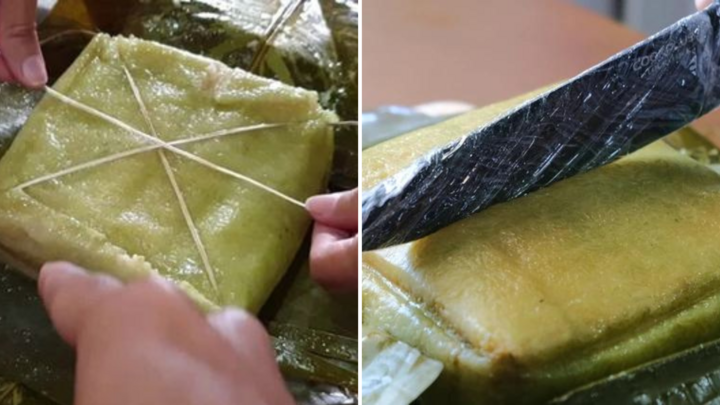
Should you cut bánh chưng with a string or a knife? (Illustration: Pinterest)
Cutting Bánh Chưng with a Knife:
This method is often favored by the younger generation for its speed and convenience. To avoid a sticky knife, you can use plastic wrap. Here’s how to cut bánh chưng with a knife:
– Prepare a pair of gloves, plastic wrap, and a sharp knife (preferably longer than the cake; avoid using a small or dull knife).
– Unwrap the bánh chưng and place it on a flat plate.
– Wrap the knife with 2-3 layers of plastic wrap.
– Gently cut the cake into horizontal and vertical slices or portions of your preferred size.
With these simple steps, you can quickly and easily cut bánh chưng without worrying about the filling spilling out. The plastic wrap ensures a clean knife without any sticky residue.
So, should you cut bánh chưng with a string or a knife? The answer lies in your personal preference and skills. If you find cutting with a knife more convenient and aesthetically pleasing, then go for it! Don’t feel pressured to follow traditional norms; instead, do what works best for you.
Essential Foods to Have in the Fridge Before the Lunar New Year
As the Tet holiday approaches, Điện máy Xanh has some helpful tips on what to stock up on and store in the refrigerator in preparation for the festivities. With most of the markets and supermarkets closing for the holiday, it is essential to have the necessary food on hand. Read on to find out what to keep in your refrigerator!
5 Ways to Preserve Delicious and Fresh Bánh Chưng – Bánh Tét Throughout Tet without Worrying about Spoilage
Chung cake, sticky rice cake – are the must-have delicacies for Vietnamese Lunar New Year. But if you don’t know how to properly preserve the cake, it can easily spoil and become moldy. So, let’s explore the tips in the Kitchen Tips section by Điện máy XANH to learn how to preserve these delicious chung cake and sticky rice cake throughout the Tet season!
Effective Remedies for Overcooked Bánh Chưng and Bánh Tét
Chung cakes, including “bánh chưng” and “bánh tét,” are traditional cakes commonly enjoyed during the Tet holiday in Vietnam. However, not everyone knows the best way to cook these cakes to ensure they are evenly cooked and delicious. Let the Kitchen Tips section of Điện máy XANH reveal simple remedies to fix flat or uncooked chung cakes for you!


























